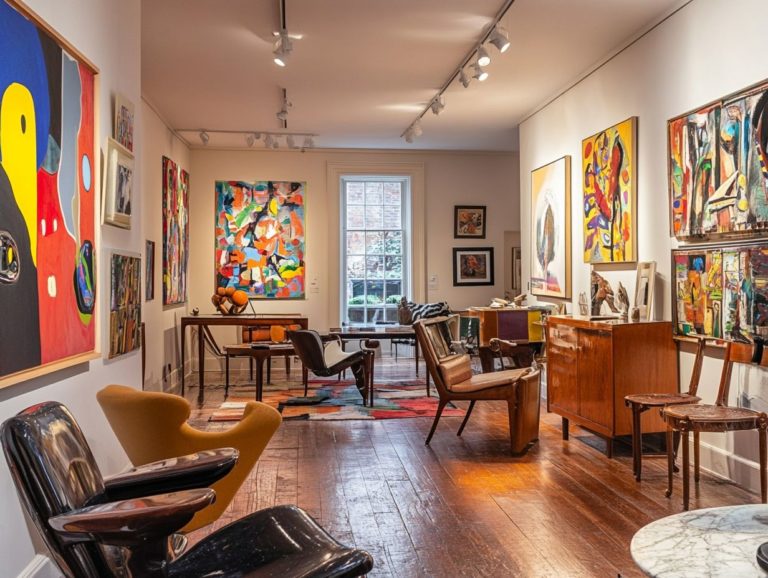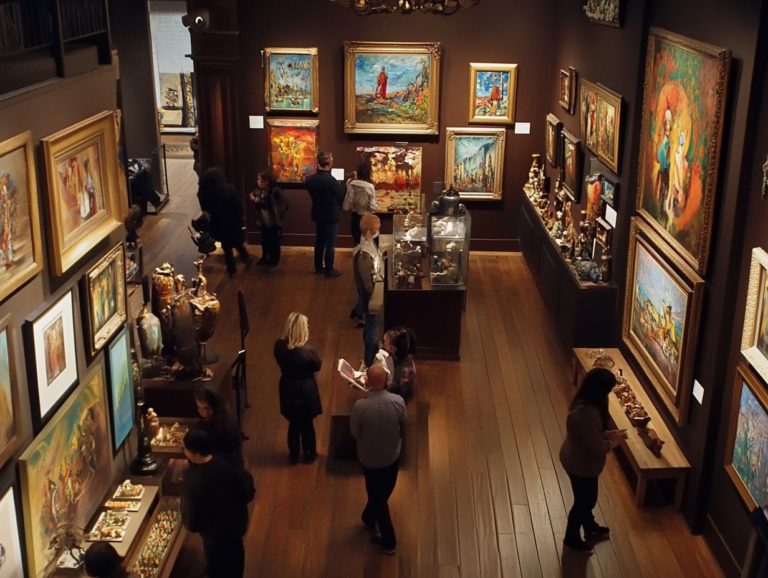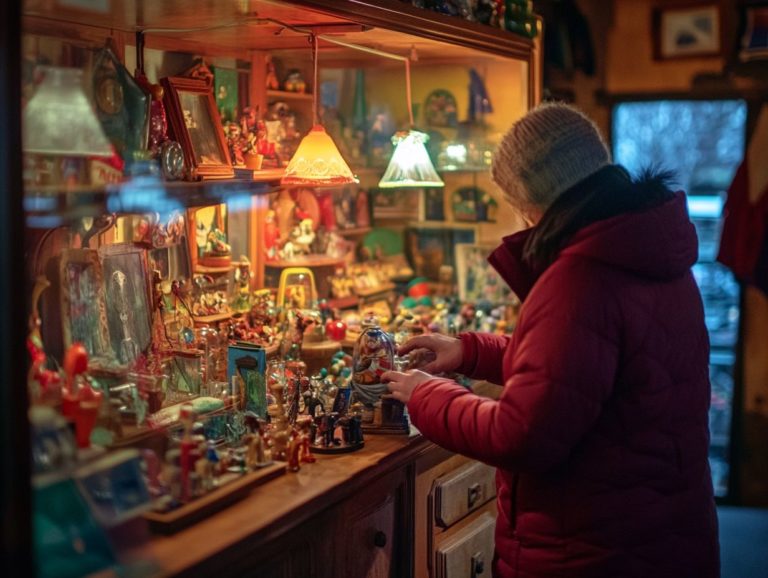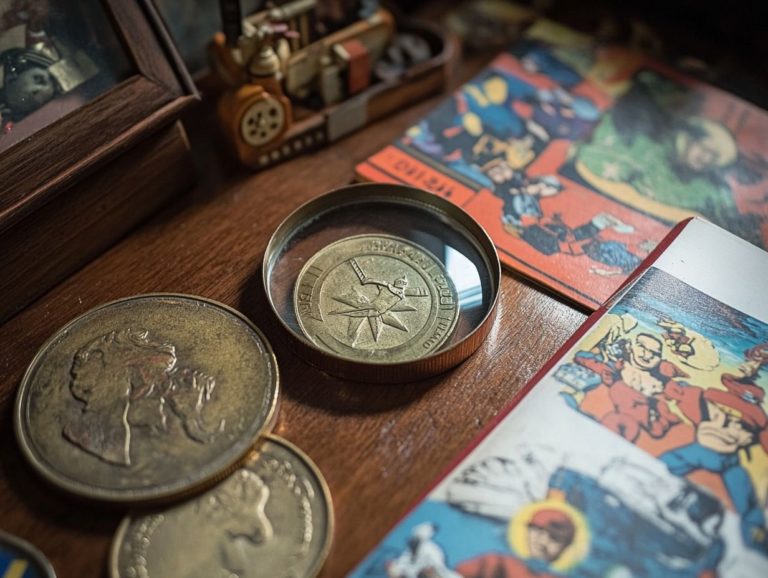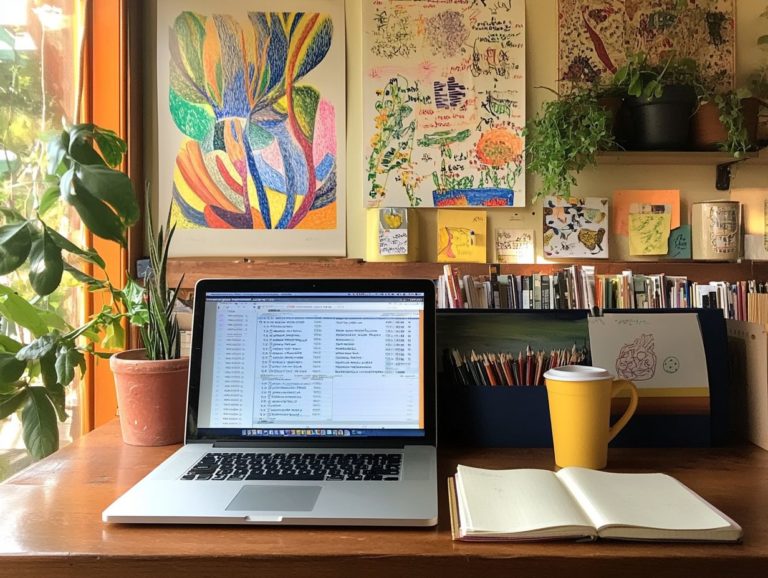How to Research Art before Buying
Buying art is not just an exciting venture; it’s a journey that deserves your attention and insight. Approaching it with knowledge and care is crucial.
By researching art before you make a purchase, you deepen your understanding of what you’re considering, allowing you to make informed decisions that resonate with your personal taste and investment ambitions.
This article delves into the advantages of educating yourself about art, the key factors to keep in mind during your research, and effective strategies for gathering and analyzing information.
By the end of this exploration, you ll be well-equipped to navigate the art market confidently, ensuring that every purchase is one you ll genuinely treasure.
Contents
- Key Takeaways:
- Why Researching Art Before Buying is Important
- Factors to Consider When Researching Art
- Where to Find Information on Art
- Tips for Conducting Effective Art Research
- Applying Your Research to Your Art Purchase
- Frequently Asked Questions
- Why is it crucial to research art before making a purchase?
- What should I consider when researching art before buying?
- How can I determine the authenticity of a piece of art?
- What are some reliable sources for researching art before buying?
- Is it necessary to research art even from well-known artists?
- Can I negotiate the price of a piece of art after conducting research?
Key Takeaways:
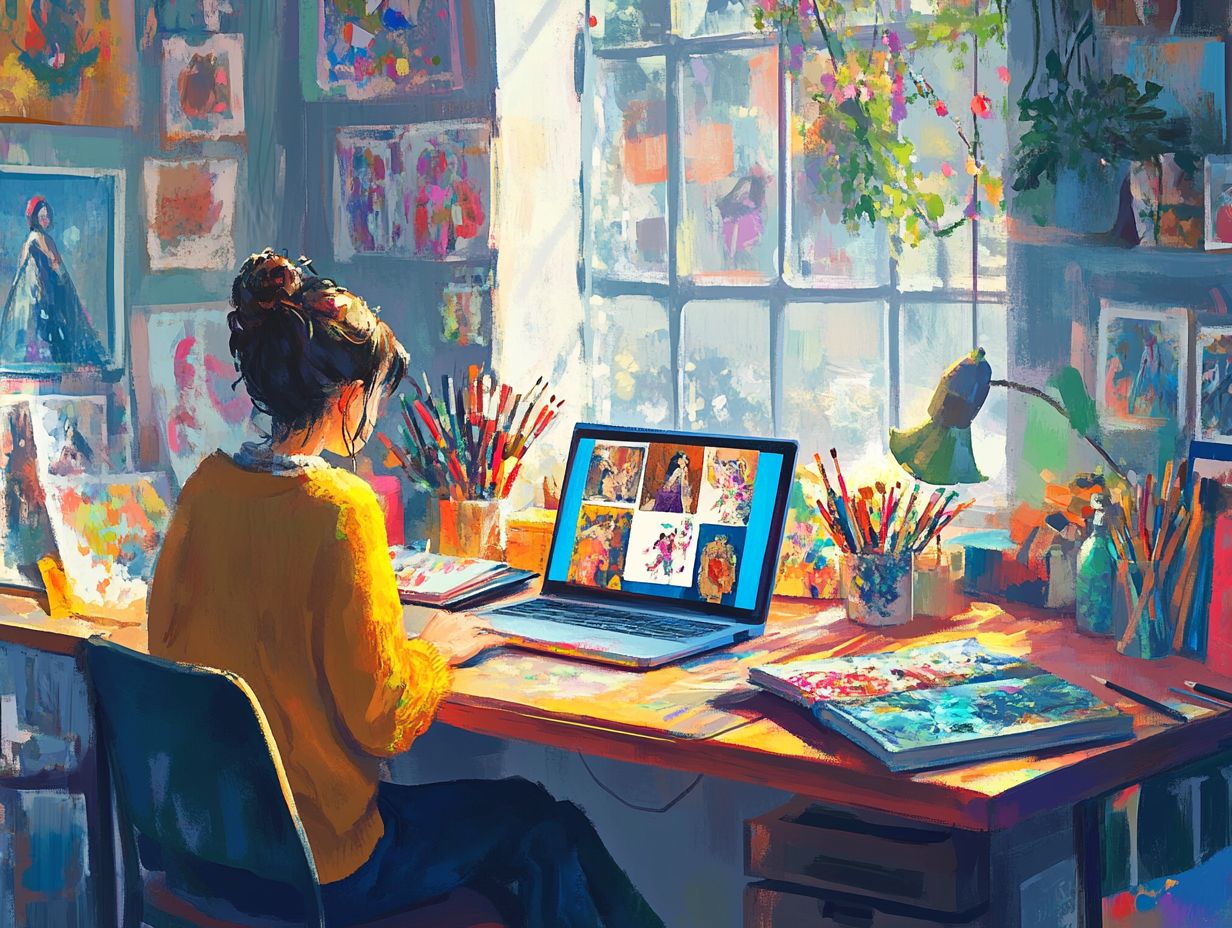
Researching art before buying is crucial for making informed decisions and avoiding potential scams or forgeries. Key factors to consider include the artist’s background and reputation, authenticity and provenance, and market value and trends. Additionally, it’s important to understand what to consider before investing in art. Online resources, art galleries and museums, and expert consultations are valuable sources of information for conducting effective art research.
Why Researching Art Before Buying is Important
Researching art is essential for anyone looking to buy. This not only deepens your appreciation for unique artworks but also empowers you to make informed decisions that align with both your taste and budget.
Whether your heart leans toward contemporary pieces or you’re captivated by established artists, a thorough understanding of the art market helps you connect with the art community, assess the authenticity of artwork, and discover potential investment opportunities that can enhance your collection’s value.
Benefits of Educating Yourself
Educating yourself about art not only deepens your appreciation but also ensures that your purchases carry meaning, reflecting your unique style and preferences.
By immersing yourself in the rich tapestry of art history and contemporary movements, you can cultivate a nuanced understanding of various artistic techniques and cultural contexts.
This knowledge empowers you as a discerning art enthusiast to recognize not only aesthetic appeal but also the deeper narratives and intentions behind each piece.
This insight turns impulse buys into meaningful treasures.
Engaging with art education elevates your experiences at galleries and exhibitions, fostering a deeper connection and dialogue with the artwork, the artists, and fellow art lovers.
Ultimately, this journey can truly brighten your life through the incredible impact of creativity.
Factors to Consider When Researching Art
Explore the exciting world of art it’s filled with countless opportunities waiting for you. Several crucial factors warrant your attention.
Consider the artist’s background and reputation, the authenticity and provenance of the artwork, and the current market value and trends all of which can profoundly influence your buying decision.
Grasping these elements not only enhances your art selection process but also equips you with a more informed approach to collecting and investing in art.
Artist’s Background and Reputation
An artist’s background and reputation play a pivotal role in determining the value and authenticity of their work. Established artists often come with a rich history in the art market, bolstered by reviews and exhibitions that enhance their credibility.
Take, for example, past exhibitions at prestigious galleries; these not only highlight an artist’s talent but also act as endorsements from respected institutions within the art world.
On the flip side, emerging artists face a more uphill battle. Their lesser-known status often leads to skepticism regarding their work until they’ve compiled a portfolio filled with visible accolades.
Critics’ reviews can also have a dramatic effect on perceived value; a glowing assessment can ignite interest and drive prices up considerably. In the end, the narrative surrounding an artist s journey whether they are rising stars or seasoned veterans significantly influences collectors’ willingness to invest in their creations.
Authenticity and Provenance
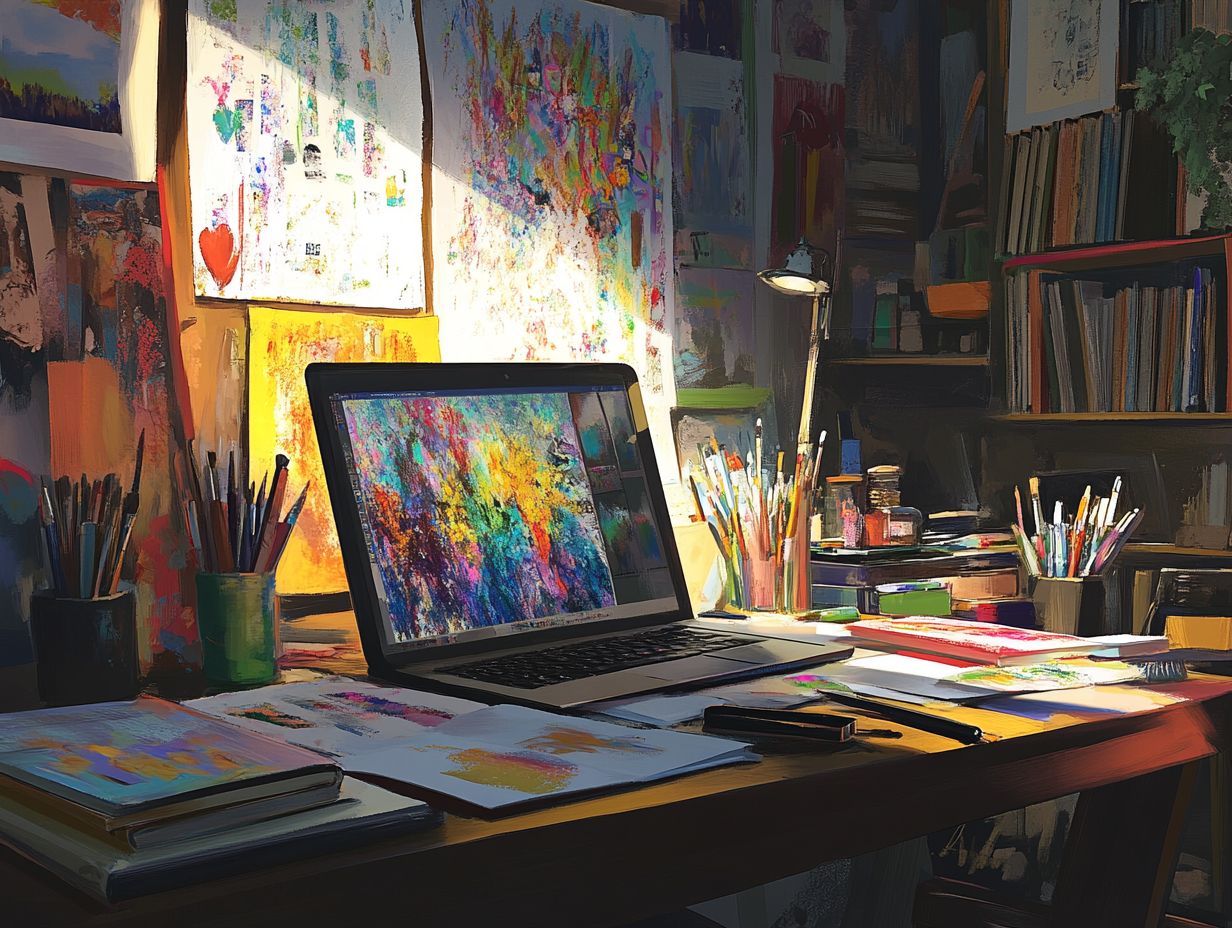
The authenticity and provenance of a piece of art are crucial for you as a collector. Provenance refers to the history of ownership of an artwork, confirming that the piece is genuine while elevating its investment value and allure in the art market.
When you think about adding a new piece to your collection, understanding its historical context and previous ownership can profoundly impact your decision. A well-documented provenance can transform a work from mere decoration into a valuable asset.
This documentation tells a compelling story about the artwork and its journey, often leading to increased demand and, as a result, a rise in its value over time.
Every collector dreams of acquiring a piece with undeniable authenticity and rich provenance. It safeguards your investment while enriching your passion for art.
Market Value and Trends
Understanding the market value and trends in the art world is crucial for making informed buying decisions. This knowledge shows which art pieces are appreciating in value and which styles or mediums are currently in vogue.
Being aware of these dynamics not only gives the power to collectors to acquire pieces likely to increase in worth over time, but it also equips investors with the foresight needed to navigate the ever-changing landscape of artistic investments.
Recognizing shifts in consumer preferences or spotting emerging artists can unveil lucrative opportunities that might otherwise slip under the radar. By staying attuned to market dynamics, you foster confidence in your decisions, enabling a clearer grasp of the implications of your purchases whether you re indulging in personal enjoyment or making a savvy financial move.
Where to Find Information on Art
Finding reliable information on art is crucial for anyone eager to deepen their art knowledge and make informed purchases. Don t miss the chance to explore reliable sources that will elevate your art knowledge and guide your purchases.
Your resources can span a variety of avenues, from esteemed art galleries and museums to online art platforms and exhibitions showcasing a rich array of works from diverse artists.
Online Resources
Online resources, from dedicated platforms for art sales to social media channels like Instagram and insightful art reviews, present a treasure trove of information for art buyers. This facilitates a more profound connection to the art community and grants access to a broader spectrum of artworks.
These digital avenues empower you to explore an array of artists and styles right from the comfort of your own home, effectively dismantling geographical barriers. Engaging with a lively community of art enthusiasts and critics allows you to gather valuable insights and feedback through reviews and discussions.
By following artists directly on social media, you cultivate a more personal relationship that enables you to grasp not only the artworks but also the stories and inspirations behind them. This enhanced access plays a crucial role in guiding your purchasing decisions, ensuring they resonate on a deeper, more meaningful level.
Art Galleries and Museums
Art galleries and museums stand as timeless yet invaluable resources for your art research, offering you the chance to view artworks up close, attend captivating exhibitions, and consult with knowledgeable art experts.
These institutions showcase remarkable pieces and provide insights into the artistry and value of specific works. As custodians of cultural heritage, they frequently host significant exhibitions that deepen your understanding of historical contexts and artistic movements.
By engaging with curators and art consultants, you can uncover nuanced perspectives that enrich your research. Each exhibition doesn t just display unique creations; it also sparks discussions around themes, techniques, and the artist’s intent.
The diverse collections within these venues encourage you to make comparisons and engage in critical thinking, further enhancing your appreciation and comprehension of art. In this way, art galleries and museums become essential destinations for anyone serious about looking into the intricate world of art.
Expert Advice and Consultations
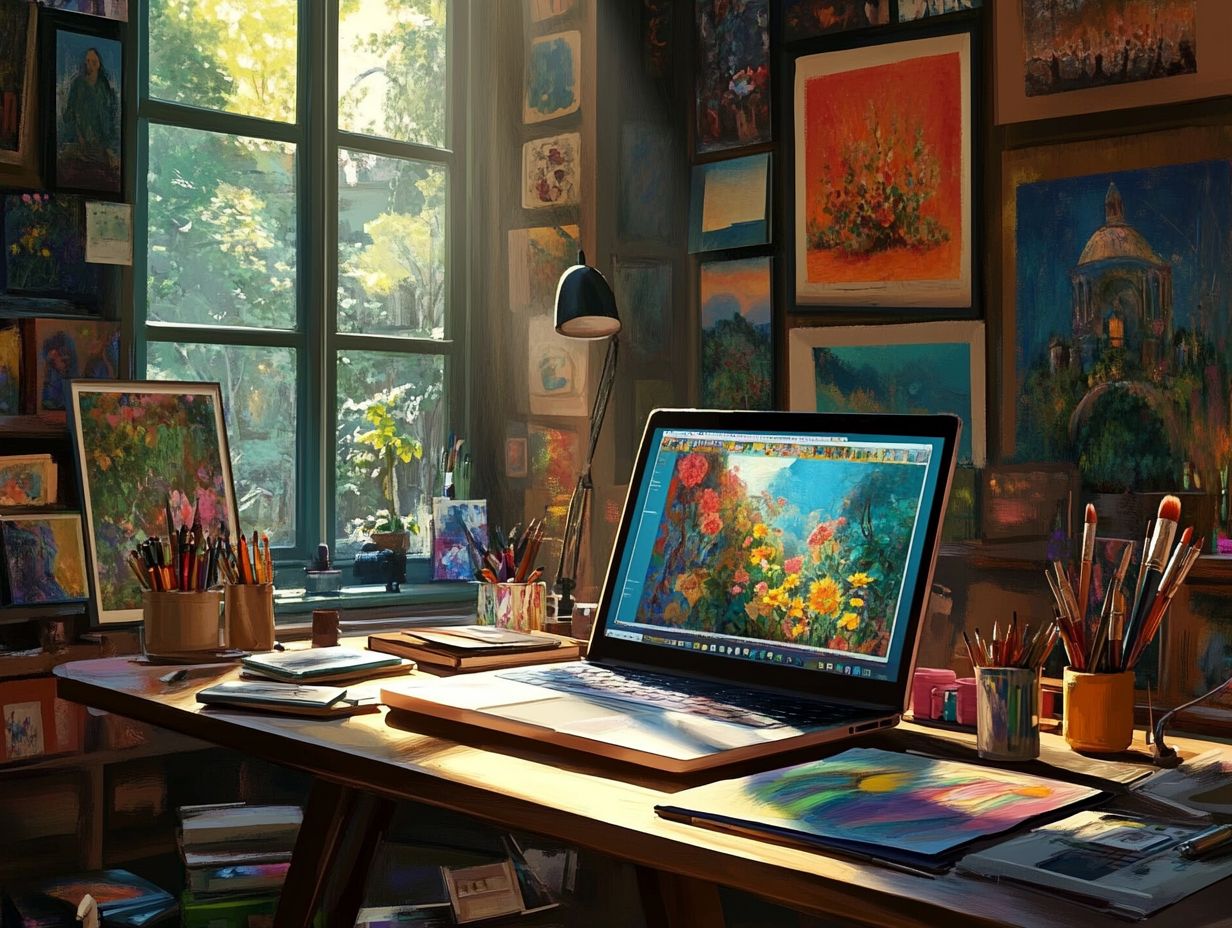
Seeking expert advice from art consultants can offer you invaluable insights into art investment. This can also enrich your overall knowledge of the art world.
This ensures your purchasing decisions are informed. They will also align strategically with your art interests.
By leveraging their extensive experience, these professionals can help you identify new artists, assess the authenticity of pieces, and analyze market trends that could influence future valuations.
Art consultants typically possess a rich network of galleries, auction houses, and private collectors. This enables them to assist you in sourcing unique artworks that truly resonate with your personal preferences.
This personalized guidance makes navigating the art market exciting and enjoyable! It allows you to cultivate a deeper appreciation for the intricacies of art value.
Ultimately, it gives you the power to make choices that enhance your collection and beautifully reflect your personal aesthetic.
Tips for Conducting Effective Art Research
Conducting effective art research requires a structured approach to organizing and analyzing information. It s essential to ensure that your sources are credible and current.
This diligence will ultimately empower you to make more informed buying decisions.
Organizing and Analyzing Information
Organizing and analyzing information is vital for your art research journey. It clarifies your personal art preferences and ensures you consider every relevant factor before making a purchase.
To kick off this process, start by compiling a list of potential artworks and artists that resonate with your style. Digital spreadsheets can help you categorize your findings and easily compare factors like price, medium, and emotional impact.
Set a timeline for your research to keep your focus sharp. This way, you can thoroughly examine everything from artist backgrounds to market trends.
Engaging with online platforms that curate art collections will also give you valuable insights into the current art scene. This deepens your understanding of various styles and movements.
Don’t underestimate the power of conversations! Participating in discussions with fellow art enthusiasts or attending gallery exhibitions can significantly enrich your perspective.
This approach will ultimately lead you to make informed and satisfying purchases.
Verifying Sources and Information
Verifying the credibility of the sources and information you encounter during your art research is essential. This practice safeguards your investment and enriches your understanding of art history and context.
To identify credible sources, prioritize information from established institutions like museums and galleries, as well as respected art journals and publications.
Checking the credentials of authors and confirming their affiliations can significantly enhance the reliability of the information you gather.
Engaging with expert opinions and reviews will further help you discern quality sources. This allows for a more informed exploration through the rich and diverse landscape of artistic expression.
Applying Your Research to Your Art Purchase
Effectively applying your research to your art purchases can profoundly influence your buying decisions. This approach gives you the power to make informed choices that align with your personal art preferences.
These choices can also hold potential investment value for your collection.
Don’t wait! Start your research now to secure the best art pieces for your collection.
Making Informed Decisions
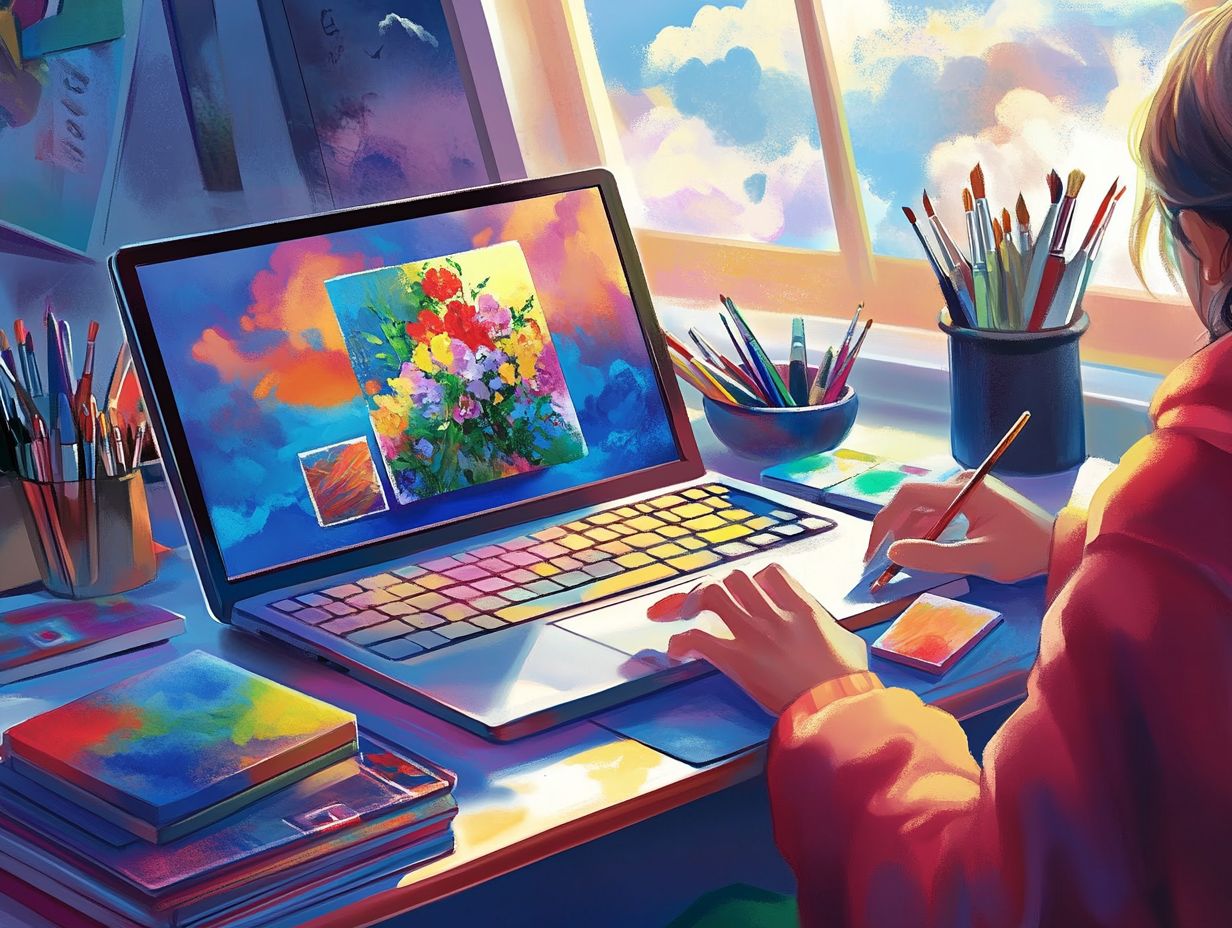
Making informed decisions on your art purchasing journey involves harnessing your art knowledge. Understanding your personal interests helps select pieces that truly resonate with you, ensuring a meaningful addition to your collection.
This process begins with self-reflection. Take the time to examine your tastes and preferences whether you lean towards abstract or realism, contemporary styles or classical works.
Engaging with various art forms deepens your understanding. Attend gallery exhibitions to gain insights into the techniques and narratives of different artists.
Researching market trends and exploring reputable sources will provide you with valuable context about potential investments. A thoughtful approach encourages you to align your choices with emotional connections to art and a solid comprehension of the art world. This ultimately leads to more satisfying and enriching acquisitions.
Frequently Asked Questions
Why is it crucial to research art before making a purchase?
Researching art is important because it allows you to make informed decisions, avoid potential scams or forgeries, and ensure that you are paying a fair price for the piece.
What should I consider when researching art before buying?
Important factors to consider include the artist’s background, reputation, market demand, as well as the medium, condition, and history of the artwork.
How can I determine the authenticity of a piece of art?
There are several ways to determine authenticity, such as examining the signature or stamp, checking for any alterations or repairs, and comparing the piece to known works by the artist.
What are some reliable sources for researching art before buying?
Reliable sources include reputable galleries, auction houses, and art dealers, as well as online databases, art history books, and expert opinions.
Is it necessary to research art even from well-known artists?
Yes, it is always important to research art before buying, even from well-known artists. This ensures you are getting an authentic piece, paying a fair price, and understanding the historical and cultural context of the artwork.
Can I negotiate the price of a piece of art after conducting research?
Yes, you can negotiate the price after conducting research. If the asking price is significantly higher than the market value, use your research as leverage to negotiate a better deal.
Start your adventure in art today! Explore galleries and discover what speaks to you.
Remember, every piece of art tells a story. Make sure yours is a story worth sharing!


